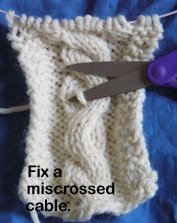...they are talking about stratigraphy and the
principal of superposition (older stuff on the bottom, newer stuff on
top, generally speaking). We learned about both of those concepts in archaeology (not a surprise), but while ideas are the same, the reality in the two concepts is quite different. The
entire archaeological record is in the last 200,000 years. The dinos
all lived more than 60 million years ago, and what can happen to the
rocks (let alone the continents and their positions!) in that amount of
time makes the stratigraphy much more ... interesting.
Fossils are found in sedimentary rock. Layers of
sediment are laid down (in river channels, perhaps), and, over (LOTS OF)
time, they become rock. Later still, a volcano may erupt up through
the layers, or the layers may be near new mountain ranges which tip the
older formations (or "crunch and fold" them). Tipped, crunched, and
folded formations may have their top surfaces eroded away, and new
layers may be laid on top.................
(At least the geography has stayed put [relatively speaking], in the archaeological context!)
Given that fossilization only takes place in wet environments (things have to be buried rather quickly if they are going to fossilize), which doesn't happen in desserts at all, and doesn't happen in forests or prairies, either, really, and given that carcases are scavenged, and/or tumbled along with the current in a river bed before they ever might be fossilized, and given that we don't find fossils until they are exposed on the surface of the earth, generally speaking, and that they will erode away to nothing once exposed.....
Throw in all of that geological manipulation of the rocky structure of the surface of the planet over the millions of years..........
Given all that, it's amazing that we know anything about dinos at all, I think.
And yet we do, and we're learning more all the time. Cool...............
Dino class is being taught from the University of Alberta. I've thought about taking the trans-Canada train. Yesterday I wondered how close the trans-Canada train goes to Dinosaur Provincial Park in Alberta, and I spent some time looking at maps. (The answer is -- Edmonton, where U of Alberta is, is on the trans-Canada route, and Dino Park is about 4 hours from Edmonton by car.)
I bet Coursera didn't think about enhanced tourism as one of the benefits of their offerings, but I bet it is happening...........
UPDATE, 11/2/13 -- Victoria, who left a comment here (how cool is that???), is one of our teachers in Dino 101! Her blog is here, with lots of info about paleontological doings in Edmonton and surrounds. Thanks for the visit here, Victoria, and for commenting. I would LOVE to visit the lab!!! :-)
ps, Victoria -- if I make any mistakes in anything I say about Dino class here, I hope you will correct me!
.
Subscribe to:
Post Comments (Atom)

















6 comments:
If you make the trip, let us know - you should come visit the lab!
If I do, I will definitely let you know!!! I would LOVE to visit the lab!
:-) Thanks! :-)
Victoria, I paid you a visit at your blog, and tried to leave a comment.
For reasons that escape me, I am only able to comment on some blogger blogs (I think it has to do with the template -- I suspect some templates of trying to leave 3rd-party comments, and I have turned off 3rd-party comments.....)
I tried to comment on the post from May with the ankylosaur drawing with three heads in color, and silhouettes from above. Love your use of color for elucidation.
I am tickled that I can read a post like that one, and have a pretty good idea what you are talking about. Before Dino 101, I'd never have known about holotypes, the Oldman formation, or tail clubs! :-)
Oops -- in my comment above, I meant 3rd-party COOKIES, not comments.....
Thanks for the kind comments about my blog! I am so glad to see that you are enjoying Dino101!
But of course. :-)
Credit where it's due! I have been interested in dinos since I was a little kid. I watch shows about dinos on tv, and I read articles about dinos when I encounter them in places like Smithsonian. I knew more, coming into the class, than the average person.
I have been delighted to learn so many entirely new-to-me things in Dino class (T. rex with feathers????? Cool! Birds breathe in an entirely different way from mammals????!!!!! Who knew?)
You guys are doing a great job. :-) I am grateful that you are sharing this class with all of us on Coursera.
Post a Comment